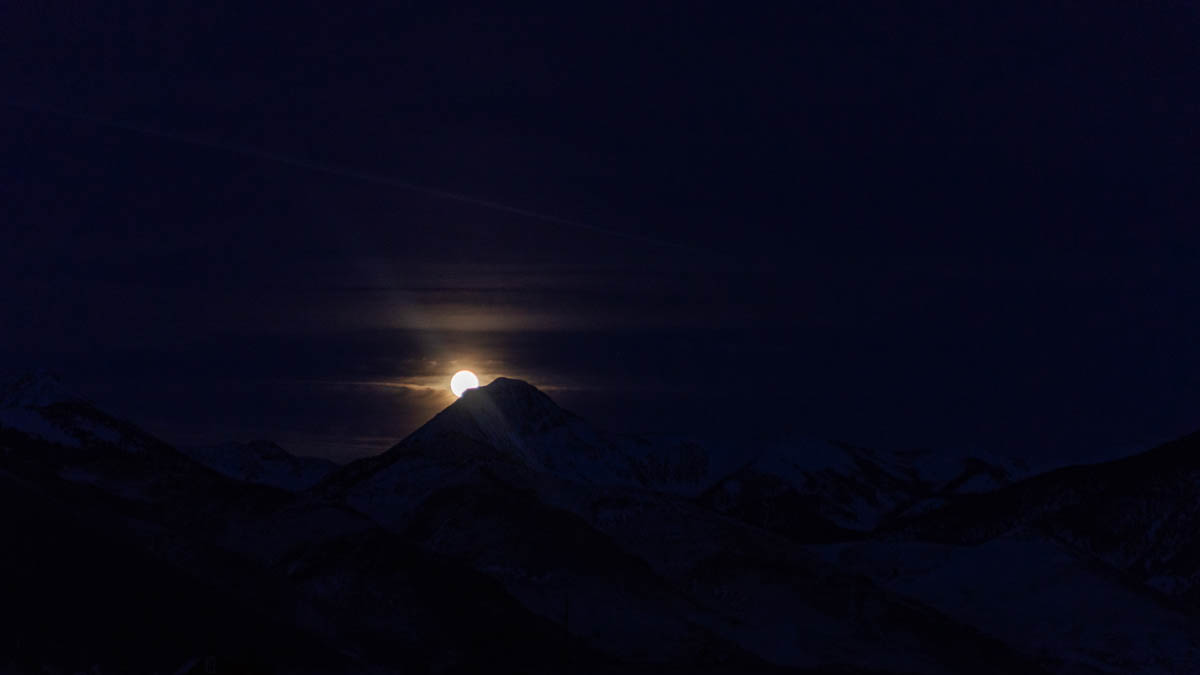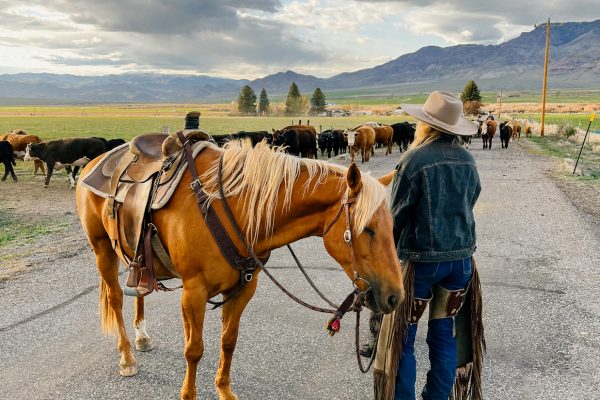
It was a rotten time and place for a wreck. Daughter Emily had already gotten bucked off her mare quite roughly (shredded her new jeans!), and now this! It was our annual Mother’s Day picnic on horseback up on the high ranges a few miles above the ranch. We’d eaten our hot dogs (yes, they were organic grassfed) and the sun had gone down behind the foothills. It was getting colder, and the dusk would turn to darkness if we didn’t get going for the return trip back to the ranch.
I was trying to get our big Belgian draft, Jingle, hooked to the chuckwagon next to his team mate, Belle. He was almost ready to rear and run over some of the picnic crew because of some horrific green monster behind him that I couldn’t see.
I scoured the creek side brush trying to find rattlesnakes, bears or anything that could so frighten a 2000 pound horse standing over 7 feet tall. I could tell it was behind him because of his wild eyes looking backward. The worst of it was that when a 1 ton piece of horseflesh wants to get away, well”¦they just do. I wasn’t going to be able to keep him from blowing up much longer.
Something in the creek caught my eye. A little 8 inch brook trout kept leaping out of the water, over and over again, just 10 feet behind Jingle. Maybe it was sheer joy, or showing off (I haven’t read much about fish psyche). Then it came to me that Jing had probably never seen a fish before”¦and it terrified him. Water was for drinking, after all. There wasn’t supposed to be living organisms in it. We shooed off the fish and Jingle calmed down.
The unexpected. That’s the way it is for all of us when we turn the beeves out on the high ranges. It’s a wilderness up there, and we always see new things on the long trail. We keep our eyes on the ground as well as the horizon, because there are stories on the trees (massive bear pulled the bark off that one) and on the ground (obsidian flakes from distant Yellowstone left by a Native American hunter).
The beeves learn to watch too. They know the spots in the seventy square miles of country that have the best grass, cover and spring water. It is amazing that they can find their way around.
This freedom to roam makes for the best beef, because a steer will pick the grass densest in flavor. Research is showing that flavor-intense forage also happens to be the most nutrient dense. And that translates to high nutrient density in our beef when compared to the feedlot or farmed and single species pasture steer who has little choice.
Could that be why beef is “bad”, according to the American Medical Association? In an article in the Journal of the AMA in 2012, the authors state that “Red meat consumption is associated with an increased risk of total, cardio vascular disease, and cancer mortality. Substitution of other healthy protein sources for red meat is associated with a lower mortality risk.”
If we thought they were right, we’d have a pretty rotten time being ranchers. But we think they are wrong, not in the research, but in the kind of beef the researchers chose to use in their studies.
Beef produced like we do here at Alderspring’s, where the cattle choose their own nutrition all the way until they are finished, makes up less than 1/10 of 1 percent of beef grown in the US. JAMA’s study states that more than 23,000 individual’s information was used in the study. I think I’m safe to assume that it is highly unlikely that any of their study subjects consumed wild-raised protein like Alderspring’s. There is simply no data on our wild beeves.
But we do have strong anecdotal evidence from our customers who tell us that our beef makes them live happy, healthy and clear-thinking lives. This gives us great satisfaction. It’s our passion to connect healthy wild landscapes, biodiverse soils and human health. It is good work that benefits both the wild, natural, and semi-wild agricultural lands that we have loved all our lives and the people that we serve.







Leave a Reply